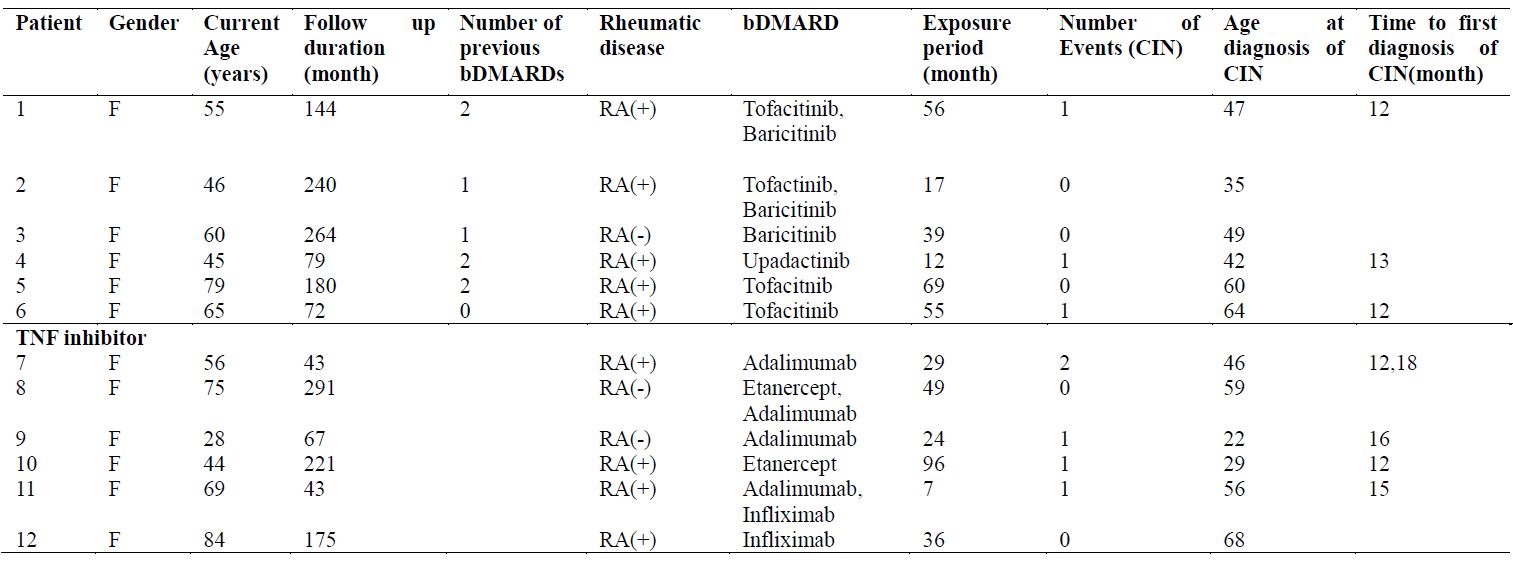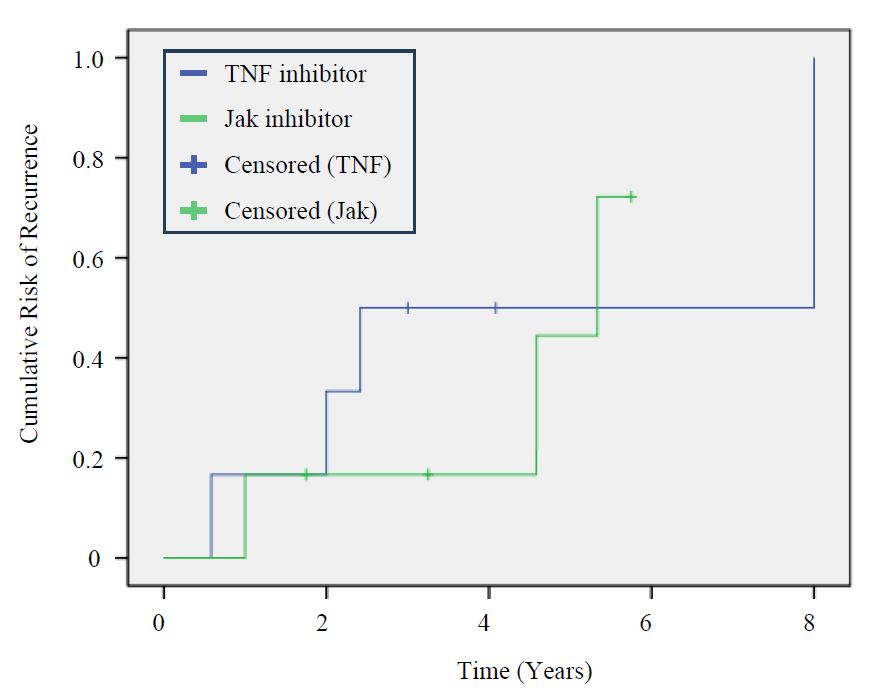Session Information
Date: Monday, November 18, 2024
Title: RA – Treatment Poster III
Session Type: Poster Session C
Session Time: 10:30AM-12:30PM
Background/Purpose: Janus kinase (JAK) inhibitors are increasingly used in the treatment of Rheumatoid arthritis (RA); however, concerns have been raised about their potential to elevate the risk of malignancy. Nonetheless, there have been few studies on the risk of cervical intraepithelial neoplasia (CIN) in patients with JAK inhibitor therapy. This has led to a clinical issue regarding whether to initiate JAK inhibitors in patients with CIN, even after curettage resection.
This study aims to compare the incidence and recurrence rates of CIN in patients treated with JAK inhibitors versus tumor necrosis factor (TNF) inhibitors, to determine whether JAK inhibitors increase the risk of CIN or influence its recurrence compared to TNF inhibitors.
Methods: We conducted a retrospective single-cohort study at Asan Medical Center, a tertiary referral hospital in Seoul, South Korea between January 1999 and April 2024. The occurrence of CIN was identified using diagnostic codes (N870, N871, N879, D069). We considered the recurrence of CIN to be associated with the target medication if the event occurred within one year of the medication. We employed Kaplan-Meier survival analysis to compare the incidence and recurrence rates of CIN based on drug exposure in patients undergoing treatment with JAK inhibitors and TNF inhibitors.
Results: A total of 19,026 patients with RA, including 1,137( 5.98% ) with TNF inhibitors and 466 ( 2.45% ) with JAK inhibitors were identified. Among these, patients who were cured of CIN were recruited and followed up. During a total follow-up of 41.75 person-years, CIN occurred in 12 patients, yielding an incidence rate of 28.74 per 100 person-years. The median age of patients at the diagnosis of CIN was 48. Over the study period, we observed event occurrences in each group, in the JAK inhibitor group (n=6) and in the TNF inhibitor group (n=6) (Table 1). In the JAK inhibitor group, 3 events were recorded: 3 recurrences, and 0.14 events per person-year. In the TNF inhibitor group, 4 events occurred: 3 single recurrences, 1 double recurrence, and 0.20 events per person-year. The analysis revealed no significant difference in recurrence rates between the two drugs during the exposure period (Kaplan-Meier chi-square test χ2 = 0.118, p > 0.05, Figure 2).
Conclusion: Among the patients cured of CIN, JAK inhibitors do not appear to increase the risk of recurrence compared to TNF inhibitors.
To cite this abstract in AMA style:
Cho M, Kim Y, Lee Y, Ahn S, Hong S, Oh J, Lee C, Yoo B, Kim Y. Risk of Cervical Intraepithelial Neoplasia During Janus Kinase (JAK) Inhibitor Treatment in Patients with Rheumatoid Arthritis: A Retrospective Cohort Study [abstract]. Arthritis Rheumatol. 2024; 76 (suppl 9). https://acrabstracts.org/abstract/risk-of-cervical-intraepithelial-neoplasia-during-janus-kinase-jak-inhibitor-treatment-in-patients-with-rheumatoid-arthritis-a-retrospective-cohort-study/. Accessed .« Back to ACR Convergence 2024
ACR Meeting Abstracts - https://acrabstracts.org/abstract/risk-of-cervical-intraepithelial-neoplasia-during-janus-kinase-jak-inhibitor-treatment-in-patients-with-rheumatoid-arthritis-a-retrospective-cohort-study/


